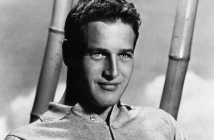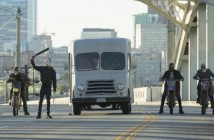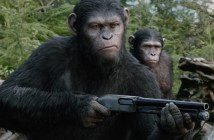We’ve come a long way since homosexuality and similarly sensitive gender-related issues needed to be hidden or couched in euphemism for mainstream popular culture. Despite the subtextual “queerness” of Franklin Pangborn, Edward Everett Horton, Sal Mineo, and others, it was independent and avant-garde films that most strongly pushed boundaries earliest. Just as it did for the wider public consciousness, the Stonewall riots of 1969 helped bring the concerns of the gay community to the notice of cinema audiences, and internationally the 1970s represent a watershed for gay filmmakers, most notably Waters, Fassbender, Pasolini, and Schlesinger. Since then entire waves of films unafraid to portray the lives of gay, lesbian, bisexual, and transgender people, in all their kaleidoscopic facets, have led to further and further acceptance in the wider culture.
10. Victim (1961)
A controversial British “social problem picture,” Basil Dearden’s Victim has no outright sex or homoeroticism but remains a landmark for its use of even the word “homosexual” and even-handedness in its depiction of the lifestyle in early 60s Britain. Dirk Bogarde gives a sensitive, dignified, heroic performance as a closeted barrister who becomes the target of a blackmailing plot. The film contains several discussions about the morality of anti-gay laws of the time, as well as about the natural urges gays feel that should not be legislated. If the arguments and speeches verge on the academic or preachy, the film remains a powerful clarion call for acceptance and understanding in a time hardly conducive to either. In visual style, Victim approaches the best of film noir, replacing an oppressive postwar world-weariness and near-nihilistic amorality with an even more immediate and constant threat of discovery and apprehension. Despite its lack of real imagery, it was initially banned in the US. In the time since, it’s been easily eclipsed in controversy and subject matter, but the style and performances, especially that of the possibly homosexual himself Bogarde, make it a crucial landmark in the depiction of homosexuality on screen.
 9. Wild Reeds (1994)
9. Wild Reeds (1994)
The awakening of homosexual desire in a student at a French boarding school during the Algerian War is but one strand of André Téchiné’s intimate yet panoramic Wild Reeds. The title refers to a small group of young people coming-of-age in a time of political and cultural upheaval, and their attempts to merely bend and not break under the strain (recalling a fable told in class about a rigid tree and a yielding reed encountering the winds of a storm). François (Gaël Morel) is the most sensitive and poetic of the protagonists, and his tentative sexual awakening is what makes the film a great LGBT movie. He experiments first with a more earthy student, Serge (Stéphane Rideau), moving from dormitory conversations to sexual situations. Serge eventually outgrows this experimentation, still remaining a staunch friend and ally to François, who has a harder time adjusting to his latent homosexuality. One of the most heartbreaking moments of the film for François is when he is finally able to ask the gay shoe salesman in town what it’s like to fully realize one’s sexuality. The slightly abashed salesman replies that he doesn’t really remember, and François abruptly lose his nerve anyway. But by the end of the film, he seems the most comfortable in his own skin, embracing both Serge and his female best friend Maïté (Élodie Bouchez).
8. Fireworks (1947)
Kenneth Anger is one of the cornerstones of the queer sensibility in the film world, and his earliest surviving film is the surrealistic Fireworks, a mix of Buñuel and Cocteau that exists as a seeming compendium of homoerotic imagery and atmosphere. Where his later Scorpio Rising would explode the iconography of the biker subculture, this film includes US Navy sailors that are both erotically-charged and violently dangerous, appealing and repellant. Made when Anger was just nineteen years old and on a weekend when his parents were away, Fireworks still has a transgressive charge to it; while easily decoded in its myriad of phallic symbols, the oneiric fantasy of pain and pleasure at the hands of a gang of seamen at its center complicates any simple reading. Worth viewing and studying for more than just its gay themes, the film is an electrifying debut as well as a landmark in the American avant-garde.
 7. Mala Noche (1985)
7. Mala Noche (1985)
Gus Van Sant has directed some of the greatest of gay films precisely because “gayness” seems so incidental compared to the rich characters, incidents, and milieus that really make up the movies themselves. His feature debut was Mala Noche, the tale of the unabashed cruiser Walt (Tim Streeter), hitting on some younger Mexican workers he comes across in Portland. Part DIY road-movie with a scuzzy, black-and-white sincerity, the film plays the slacker gringo’s lust for what is so different from him (except in gender) for some rich tragicomedy, Walt’s deadpan self-examining voiceover a major source of laughs.The story’s really about his misplaced desire in the dusty, alienating town, as well as a vehicle Van Sant’s jagged, experimental montage sex scenes and dreamy, drowsy exteriors that would reappear in his subsequent work, and not simply about the characters’ mere sexual orientations.
6. Hedwig and the Angry Inch (2001) and Velvet Goldmine (1998)
The arts seems to be the one area of life where those of all kinds of sexual persuasions, whether secretly or openly, can best express themselves. The glam rock universe of the 1970s has proven a fertile environment where sexual ambiguity and flamboyant desires can play themselves out, best exemplified in two pseudo-musicals by gay filmmakers, John Cameron Mitchell’s Hedwig and the Angry Inch and Todd Haynes’s Velvet Goldmine. The latter is a thinly-veiled examination of the likes of David Bowie and Marc Bolan, Iggy Pop and Lou Reed, by way of Citizen Kane‘s flashback structure. The former is a more freewheeling adaptation of the stage musical by Mitchell and Stephen Trask, in which a transgender singer from East Germany narrates his life and travails. Both films revel in the indulgent, fluid conceptions of gender and sexuality that make the music and fashion of the era larger-than-life, but they also have beating hearts of gratitude for the trailblazing artistry of their beloved 70s rock icons, gay or straight or both.
 5. Un Chant d’Amour (1950)
5. Un Chant d’Amour (1950)
Controversial French writer Jean Genet’s only directorial effort is the short, silent, black-and-white, intensely artistic and homoerotic Un Chant d’Amour, or A Song of Love. The longing between two imprisoned convicts, one young and the other older, for themselves and for the outside world gets sublimated into the exchange of cigarette smoke through a decidedly phallic straw pressed through a tiny space in the wall between them. A voyeuristic guard, after peeping in on the masturbatory acts of other prisoners, threatens the older convict with a thoroughly fetishized gun, only to fail to dent the convict’s eroticized fantasies of freedom. Genet’s film deserves a place amongst the foremost avant-garde works of its era, as completely mesmerizing as is its blatantly sexual imagery and poetic use of bodily close-ups. As homosexual reverie, it really has yet to be matched or mastered, although the likes of Andy Warhol have come mighty close since.
4. Tropical Malady (2004)
The startlingly original, exotic, eye-opening work of Thai filmmaker Apichatpong Weerasethakul is so exciting to watch that the filmmaker’s homosexuality is usually far down the list of interesting things to discuss. Yet several of his films involve gay characters, including the protagonists of his mesmerizing Tropical Malady, a bifurcated love story that begins with the relatively conventional narrative of increasingly intimate love between soldier Keng (Banlop Lomnoi) and country boy Tong (Sakda Kaewbuadee), but that eventually bursts into the jungle and a kind of hallucinatory tribal folk tale of erotic pursuit. The first half is both tender and strange, in animal ways that seem to portend the second half of mystery and spirit. The film transforms the earthy atmosphere of pure arousal into something more defiantly cosmic and alien, explicable only through visual means, such as the gaze of a tiger. The erotic becomes the spiritual, the two halves complementing like the village and the jungle in which the two men’s desires play out.
 3. Fucking Åmål (1998)
3. Fucking Åmål (1998)
Sweden’s Lukas Moodysson avoids all of the trappings of sensationalized teenage sexuality in his debut Fucking Åmål, understandably retitled Show Me Love abroad. It involves the budding relationship between blonde, popular Elin (Alexandra Dahlström) and seemingly depressed, brunette Agnes (Rebecka Liljeberg), two girls struggling to find themselves emotionally in the dead-end town of Åmål. Agnes has a crush on Elin, but Elin is still sorting out her feelings about sex and social status. The superlative performances of the two young lead actress, suitably tentative yet refreshingly outspoken and confident, makes Åmål not only a likeable and honest portrait of emerging lesbians but one of the foremost youth films of its era. Elin struggles to navigate her current circle of friends and integrate Agnes into her lifestyle, with consistently amusing results. As with the best films of youthful sexuality, it frames this uniquely important self-fashioning within the broader social sphere, linking the girls’ attempts to be more fully themselves with lives in the more free and metropolitan Stockholm. The film concludes with a scene of sweetly adolescent camaraderie and comfort following a bittersweet “outing,” warmly hinting that these girls will continue to be themselves despite the misgivings of the outside world.
2. In a Year of 13 Moons (1978)
The title of one of Fassbinder’s most personal films portends disaster, a “personal catastrophe” for “people whose lives are essentially dominated by their emotions,” according to the opening text. In a Year of 13 Moons revolves around (a fitting phrase for a film with so many ellipses, circles, and orbits in image and camera movement) Elvira (Volker Spengler), a transsexual who finds herself in the deepest pits of despair after being beaten at a gay cruising spot and left by her current lover. This turn of events prompts her to reexamine her life, delving into her time at a convent where she was raised and eventually confronting the man (Gottfried John) for whom she had her sex change operation in Casablanca in the first place. Fassbinder is one of the crucial gay filmmakers in cinema history for his unsparing examinations of sexuality in all its forms, but his honest look at Elvira in 13 Moons, inspired by the suicide of Fassbinder’s actor-lover Armin Meier, exudes an unwaveringly sad sympathy.
1. Happy Together (1997)
What Wong Kar-wai did in aestheticizing the bittersweet, doomed romance between a man and woman in In the Mood for Love he first did for a more carnal, belligerent gay couple in the ironically-titled Happy Together. His patented swooning visuals via Chris Doyle’s cinematography illustrate the combustibly push-pull relationship between Ho (Leslie Cheung) and Lai (Tony Leung), two Hong Kongers in Argentina working to get back home. Lai is the stabler of the two, the one wishing for a relatively normal life, while Ho is incendiary, excitable, reckless (the two stars’ personas make these characters all the more natural and believable). They together equally defy stereotypes and decorum, having break-up sex, make-up sex, and starting the intimately destructive cycle all over again. What Wong, Cheung, Leung, and their collaborators do in Happy Together is portray the stages of a defiantly self-destructive erotic relationship, warts and all, treating the two men like any other members of a couple who shouldn’t be together but for sheer physicality. In honesty and beauty, the film stacks up ably against Wong’s other smoky, swirling tales of urban romance, and any other LGBT film one cares to name.



